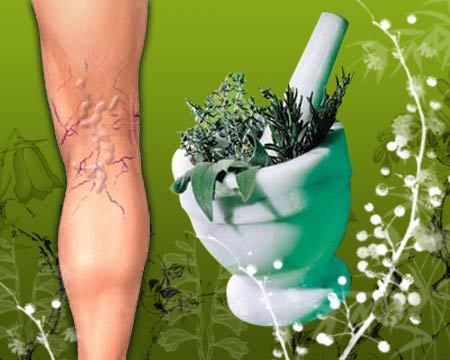Veins are thin walled vessels through which impure blood is carried back to the heart. They usually have valves which regulate the flow of blood towards the heart. Varicose veins are a condition in which veins become enlarged, dilated or thickened. Varicose veins probably affect more than 10% of the population. It can occur in any part of the body but the legs are the most affected ones, as leg veins are the largest veins in the body. They carry blood from the lower part of the body towards the heart, i.e., against the gravity. Though there are no mechanical obstacles to blood flow, it is usually the incompetence of the valves which leads to an increase in intravenous pressure.
Varicose veins have an unsighted appearance and can be dangerous. A blood clot within a large, greatly dilated vein may break away and move towards the heart and lungs, causing serious complications.
Symptoms
The first sign of varicose veins is swelling along the course of the veins. This may be followed by Muscular cramps and a feeling of tiredness in the legs behind the knees. In some cases the normal flow of blood towards the heart may be reversed when the patient is in an upright position. This results in the collection of the venous blood in the lower part of the legs and the skin becomes purplish and pigmented leading to what is known as Varicose Eczyma, also known as Varicose Ulcers. This causes severe pain.
Causes
1) Sluggish circulation due to smoking, lack of exercise, misuse of diuretics, constipation
2) Standing for long periods
3) Wearing tight clothes
4) Obesity
5) Emotional upsets, suppressed anger
Treatment
First five days should be completely on fruit juices and warm water enema once a day.
After fruit juice fasting, the patient should adopt a restricted diet plan. In this regimen, oranges and lemon juices should be taken for breakfast. The mid-day meal should consist of raw seasonal vegetables.
Steamed vegetables should be included in evening meals. No bread, potatoes, or starchy foods should be taken.
Emphasis on whole grains, seeds, nuts, vegetables and fruits should be made. All condiments, alcoholic drinks, coffee, strong tea, white flour products, bakery items, white sugar should be completely avoided.
Raw vegetables juices, especially carrot juice in combination with spinach juice have proved highly beneficial in the treatment of varicose veins. Proportion should be 300ml of carrot juice and 200ml of spinach juice, which should be consumed once in a day.
When there is a lack of vitamin C, the veins become tortuous and sag, which is the first step of varicosity. And also anemia makes poor blood supply. Vitamin E is perhaps the most important nutrient in managing healthy blood vessels. Varicose ulcers respond very well to vitamin E, as it has an extraordinary ability to increase collateral circulation. Thus when a blood vessel is obstructed by a blood clot, vitamin E helps in opening up other blood vessels, to bypass the blood around the obstruction. It does this by bringing in the use of reserve network of the veins that are always available for such an emergency. Further it enables the tissue to make better use of available oxygen which is equivalent to an extra blood supply to congested and devitalized areas.
Vitamin F, more commonly known as lecithin, helps in varicose disease by emulsifying cholesterol. These hard waxy substances are converted into tiny droplets that are readily assimilated and cannot form harmful deposits to clog the veins. Lecithin also helps the body to absorb vitamin A, and improves the body’s utilization of vitamin E. lecithin is present in high amounts in buttermilk.
The alternate hot and cold hipbath will be very valuable and should be taken twice a day. The affected parts should be sprayed with cold water or cold packs should be applied to them. A mud pack may be applied at night and allowed to remain until morning. The hot Epsom-salt bath is also useful and is advised to be taken twice a day.
The affected legs should be exposed to morning sun rays for sometime.
In case of varicose ulcers, packs saturated with Epsom salt, using one tablespoon of Epsom salt to a glass of water, may be applied. The procedure is to wrap several folds of wet muslin cloth around the legs, covering them with atleast two layers of dry flannel cloth, fastening all very comfortably. This bath is taken by immersing the legs alternatively in hot and cold water, one or two minutes in each. This treatment should be continued 20 to 30 minutes once or twice a day until the ulcers are healed.
Dr. Hiren Parekh

